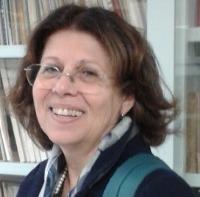Maria Guercio is President of Associazione nazionale archivistica italiana
The main challenge after two decades of good research is the weakness of international and national professional and institutional networks with reference to the capacity of sharing knowledge and solutions.
It is a paradox that in the modern society, interconnected by definition, the international community involved in digital preservation (more robust and interrelated than other professionals and rich of two decades of good research and experience) does not have planned tools and communication channels strong enough to play with continuity its role with success. In fact and indeed, the networked digital world is more fragmentary than in the past, while the archival heritage can survive for future only if our professional and institutional community will be able to put in place a long-term program of research and a stable cooperation framework. The relations we have to create and maintain could be able to re-enforce our capacity of identifying and improve solutions by cooperating and sharing our experiences, our successful achievements, but also our failures.
The lack of continuity and the increasing isolation of the stakeholders is the most critical aspect of the whole sector, but the international funding and coordinating bodies do not seem to be aware of this. For instance, this factor has seriously weakened the European effort in this area and prevented the completion of ambitious and promising projects and implementation plans, at the point that no robust programs for funding preservation projects are in place within Horizon 2020 and no coordination is available to discuss and compare the models developed in the European countries. A similar attitude is present in the ICA initiatives where a temporary group of expert has been created for handling with digital records (DREG, http://www.ica.org/en/our-professional-programme/expert-group-digital-records-dreg), but no resources are available neither for events nor for meetings.
Even in the most advanced national initiatives, well supported by a complete series of rules approved as part of a consistent legal framework for building a digital government and keeping its memory – it is the case of the Italian system – the model for preservation leaves many questions still open and many challenges (technical and organizational) unsolved, mainly because the complex processes to develop and continuously update cannot count, as mentioned, on reliable channels for sharing experience and solutions. In the Italian situation, for example, the institutions in charge for supporting the digital transformations and the related processes for preserving the electronic records are not used to cooperate and, even less, have not enough resources and energies to support the professional community with common directions, guidelines and practical rules.
The questions, which could be efficiently solved on the basis of a good cooperation, are often crucial for ensuring a sustainable model, such as:
-
the definition of priorities when the financial resources are limited and the strategies are not sufficiently detailed;
-
the coordination of responsibilities for digital preservation when more (conflicting) actors are involved in the sector (ICT profiles, record managers, archivists);
-
the timing and the controls (but also the criteria) to adopt for destroying the analogue original records when a digitization program is in place;
-
the timing for an ‘early’ submission of digital resources to dedicated repositories and the processes required to avoid duplication and fragmentation of the records and information flows;
-
the effective models for the records management, keeping and preservation sustainable in the digital environment;
-
the level of granularity to apply for data collection and management in the preservation processes (as part of preservation description information – PDI according to the OAIS model) and dissemination;
-
the best criteria and standards to follow for packaging the sets of records and related metadata in the archival packages;
-
the organizational criteria required to cope with the hybrid environment;
-
the base of evidence to collect (and the related form) for a standardized approach able to ensure authenticity assessment and interoperability among platforms.
The cooperation concerns
- researchers and educators at any level (universities, academic and no-academic environments),
- the various degrees of national responsibilities for preservation (i.e. National Archives, Regions, archival programs within each administration) but also interaction among different domains,
- the stakeholders and the professionals already active and available both in public and private sectors.
In many countries, a bottom-up effort was made to compensate the lack of institutional initiatives: national or cross-domain community of practices for digital preservation have been created with the aim of promoting a sustainable and persistent cooperation among stakeholders. The University of Rome La Sapienza (more specifically the research center Digilab) has recently (2016) promoted – in cooperation with the National Association of Italian Archivists (ANAI) and thanks to funds provided by Regione Lazio – the creation of RECAP - Rete per la conservazione e l’accesso ai patrimony digitali (http://digilab.uniroma1.it/attivit/recap), an informal but very active network among private and public bodies and including professionals from archival and ICT environments. The goals are similar to the other national networks (such as Nestor in Germany).
All these initiatives, developed on voluntary basis, will take advantage from a free environment because the intrinsic dynamic nature of digital preservation needs flexibility. But, the main factor for successful achievements is the capacity of transforming personal or ‘private’ knowledge and information into public resources, able to circulate openly and with respect to their nature. It is not a question of creating a center where to organize and assess outputs and results. On the opposite, the key terms are “exchange”, “communication”, “reciprocity” as part of a strategic and open alliance among stakeholders.

Read more...